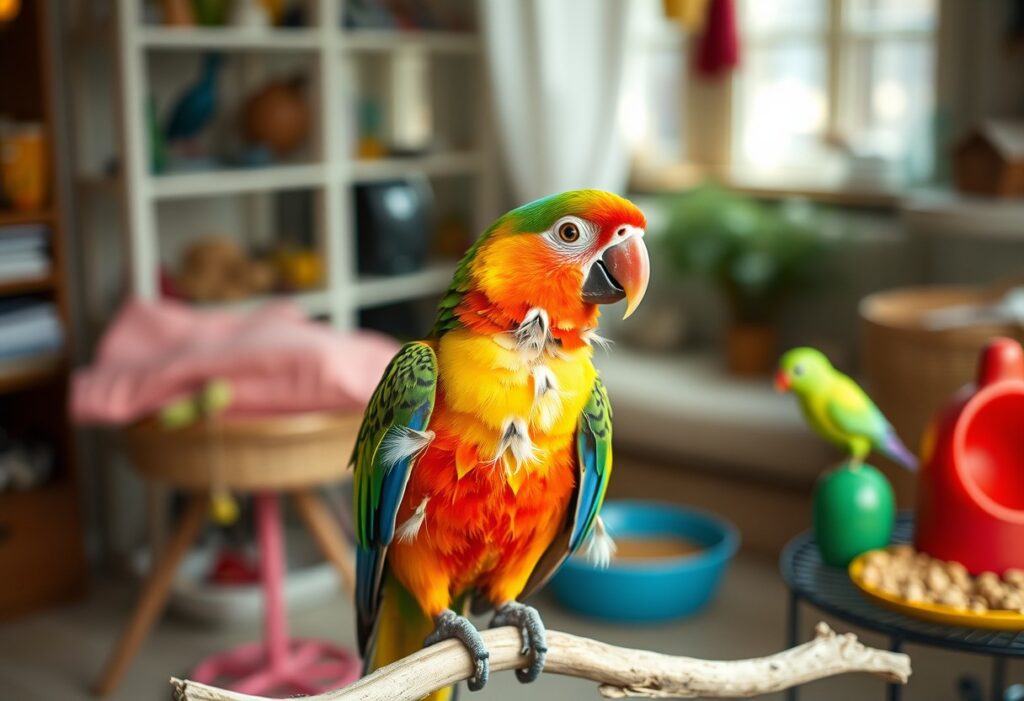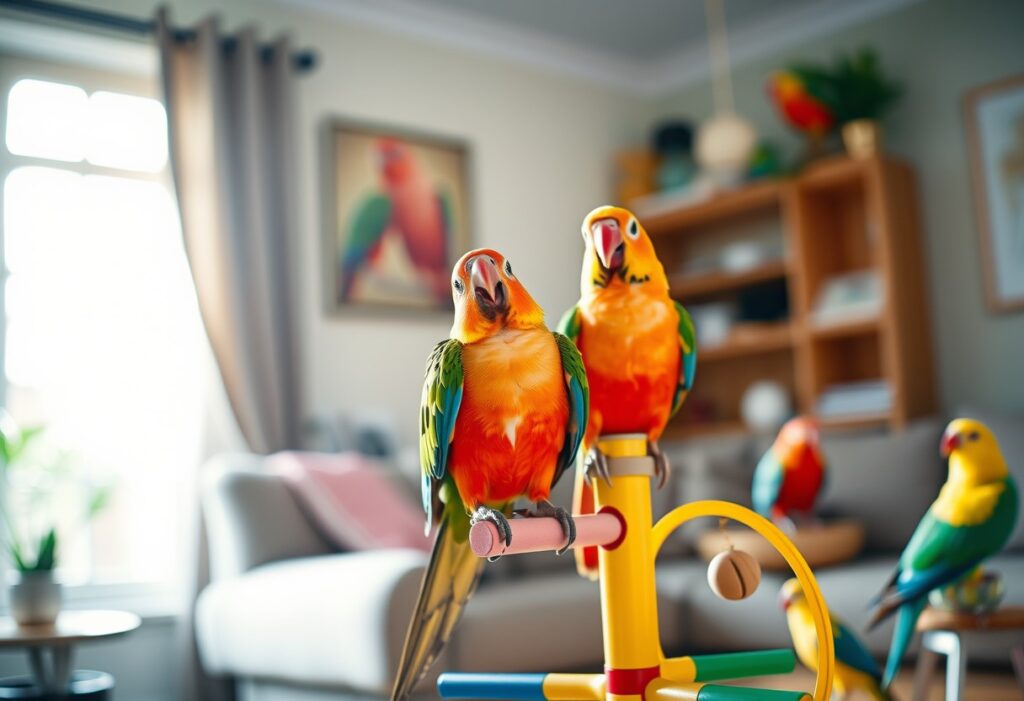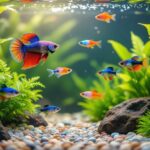Communication is imperative for fostering a healthy and thriving avian community. As a bird owner, you might underestimate the importance of a social environment for your feathered friends, but it plays a crucial role in their emotional well-being and overall health. Social interaction can help prevent stress-related behaviors such as feather plucking and excessive vocalization. By providing opportunities for your birds to engage with others, you enhance their cognitive skills and contribute to a happier, more fulfilling life. Discover how fostering a social environment can significantly benefit your beloved birds.
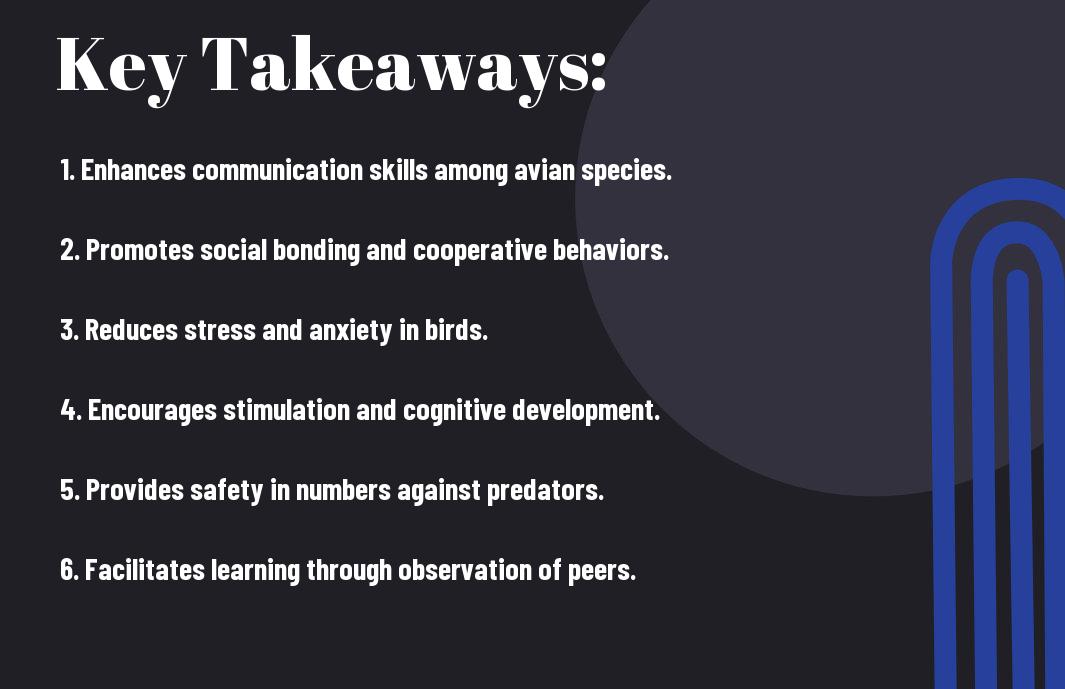
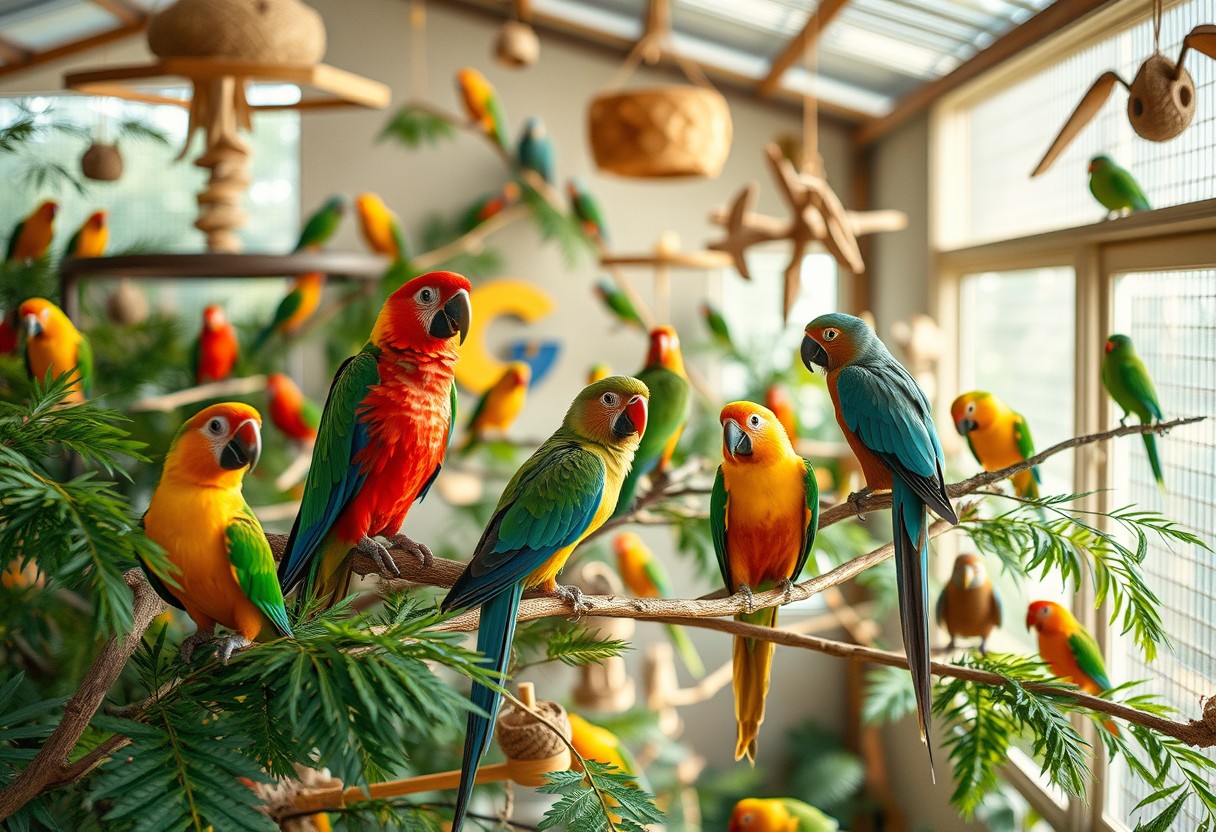
Social Structures in Bird Communities
Before delving into the complexities of social structures among birds, it’s necessary to understand how these relationships form and evolve within their communities. Birds are fascinating creatures that thrive in various **social environments**, leading to a myriad of social structures that further their survival and reproductive success. From familial ties to complex social bonds, these relationships help create a dynamic ecosystem where cooperative behaviors play a pivotal role.
Types of Social Bonds
In bird communities, various types of social bonds exist, allowing you to appreciate their varying degrees of intimacy and mutual support. These bonds can broadly be categorized into three forms: monogamous pair bonds, family groups, and communal living arrangements. Understanding these categories can deepen your insights into the interactions that characterize a bird’s life.
| Type of Social Bond | Description |
| Monogamous Pair Bonds | Two birds forming a long-term relationship for breeding. |
| Family Groups | Parents and offspring living together, often aiding in the care of younger chicks. |
| Communal Living | Multiple individuals sharing a territory or resources for mutual benefit. |
| Flocking Behavior | Birds forming groups, enhancing security from predators through numbers. |
| Territoriality | Establishing and defending a space for mating and resource availability. |
Assume that you observe a particular species of birds within a community, such as *European sparrows*, and notice the strong familial bonds among them. The presence of such family groups helps in the successful upbringing of the young, ensuring that they learn vital survival skills and have a support system for when they become independent.
Hierarchies and Roles
For many bird species, the establishment of a **social hierarchy** plays a critical role in maintaining order within their communities. This type of structure often determines access to resources, mating opportunities, and protection against predators. In bird flocks, you may witness a distinct pecking order where dominant individuals typically enjoy higher status and better access to food. Understanding these hierarchies can help you appreciate the **complex dynamics** at play within avian life.
To provide a clearer understanding of roles, consider the **leadership** that often arises in bird communities. The strongest or most experienced individuals usually take on roles that benefit the entire group, such as leading foraging expeditions or providing protection from potential threats. However, it’s equally important to note that the overall well-being of the group hinges on the cooperation and adherence to these roles. The dangers of a disrupted hierarchy include confusion, poor resource management, and increased vulnerability to predation, underlining how crucial these social structures are for birds’ **survival**.
Enhancing Survival through Social Interaction
It is widely understood that social interactions can significantly enhance the survival of birds in the wild. By living in social environments, birds gain access to a range of benefits that improve their chances of evading predators and securing resources. This chapter will explore how social interactions play a crucial role in fostering predator awareness and facilitating resource sharing among avian communities.
Predator Awareness
To begin with, social environments provide birds with increased awareness of potential threats. When birds are in groups, they take advantage of the collective vigilance of their companions. One bird may spot a predator and sound an alarm, which alerts the rest of the flock to the danger. This crucial information can lead to a more coordinated escape, with multiple eyes watching the skies and alerting others about incoming threats. The result is that your chances of survival dramatically improve when you are part of a group, as the risk of individual predation decreases.
To illustrate, think of how a flock of starlings operates. When one member detects a hawk, it will emit a specific call that warns the others. This shared knowledge enables instant reaction—a chaotic but ultimately effective response, allowing the entire flock to change direction and avoid the predator. The essence of social living not only enhances your personal safety but fundamentally shifts how birds interact with their environment, making you part of a more formidable force against potential threats.
Resource Sharing
To further elaborate on the social dynamics among birds, resource sharing is another key factor that promotes survival. In a social environment, birds can benefit from sharing food sources, foraging strategies, and even nesting sites. By actively communicating and collaborating with each other, you increase the likelihood of finding food when it is scarce or navigating through challenging environments. The synergy created by communal efforts leads to greater overall well-being for all members of the group.
For instance, when a group of foraging birds encounters a large fruit tree, those that are more adept at locating hidden fruits can signal their companions to join. As a result, not only will you find food more efficiently, but you also experience the added benefit of shared protection, as numerous eyes can distract and deter any potential threats while you feed. This interplay of cooperation and communication ultimately enhances the survival of your entire community, illustrating the profound advantages of a social environment for birds.

Social Learning and Intelligence
To understand the significance of social environments for birds, it’s necessary to explore the concept of social learning, which plays a crucial role in their cognitive abilities and intelligence. When birds share communal spaces, they have the opportunity to observe and interact with one another, leading to the acquisition of skills and knowledge that may not be easily learned in isolation. This interaction enables them to pick up on various survival strategies, from foraging methods to avoiding predators, which ultimately enhances their chances of thriving in their ecosystems.
Capturing Knowledge
Capturing knowledge through social interactions is vital for birds, as it allows them to learn from the experiences of their peers. For instance, when a young bird watches an older, more experienced individual successfully locate food, it can replicate the same behavior without the risks associated with trial and error. By observing the strategies used by fellow birds, you can identify the most effective methods for survival and adapt your own behaviors accordingly.
Mimicking Behaviors
For many bird species, the ability to mimic behaviors can have significant implications for their social structures and survival. Imitation plays a vital role, especially in species known for their vocalizations, like parrots and songbirds. Through practice and observation, these birds can learn various calls and songs that help them communicate effectively with their flock. This strong reliance on mimicking behaviors not only fosters a sense of community but also ensures that vital information regarding threats, food sources, and mating calls is passed down through generations.
With a well-developed capacity for mimicking behaviors, you can see how birds like crows and magpies adapt to their changing environments. They watch and learn from one another, adopting new techniques to access food or navigate obstacles. This social learning contributes to their overall intelligence and ability to innovate, allowing them to thrive in conditions that may pose challenges for less adaptable species. Moreover, by enhancing their communication skills, they can form stronger bonds within their flocks, promoting not only individual survival but also collective resilience.
To Wrap Up
With these considerations, it’s important to recognize the myriad benefits that a social environment can provide for your feathered friends. Birds are inherently social creatures, and when you create an enriching social space for them, you not only cater to their natural instincts but also contribute to their overall well-being. Interaction with other birds can stimulate their mental faculties, help them develop important social skills, and reduce stress through companionship. By fostering a community of birds, you promote a happier and healthier lifestyle for your pets.
Moreover, a social environment allows for natural behaviors to flourish, encouraging activities such as vocalization, foraging, and playing. Your birds will benefit from the variety that comes with having companions, which can lead to physical exercise and mental stimulation that is often absent in solitary conditions. Whether through shared spaces or interactive play, creating opportunities for social interaction will not only enrich their lives but also deepen the bond you share with them. Ultimately, investing in their social environment is an investment in their health, happiness, and longevity, ensuring your avian companions thrive in a space that mirrors their innate behaviors.
Q: What are the key benefits of a social environment for pet birds?
A: Pet birds thrive in social environments, which can enhance their physical and mental well-being. Social interaction helps reduce stress and anxiety, leading to improved overall health. Birds that are regularly socialized tend to exhibit fewer behavioral issues, such as feather plucking and excessive screaming. A social environment encourages natural behaviors such as vocalization, preening, and foraging, which are imperative for their mental stimulation and emotional health. Additionally, having companionship can prevent loneliness, making pet birds happier and more active.
Q: How does socialization with other birds influence their behavior?
A: Socialization with other birds fosters the development of imperative social skills such as communication, play, and even establishing a pecking order. When birds interact with their peers, they learn to read body language and vocal cues, which are vital for their survival in the wild. Engaging with other birds can also stimulate their cognitive abilities and encourage playful behavior, which is imperative for their emotional health. Birds that have the opportunity to socialize are less likely to exhibit aggressive tendencies and are often more adaptable to changes in their environment.
Q: Can a social environment help in the rehabilitation of injured or rescued birds?
A: Yes, a social environment can significantly aid in the rehabilitation of injured or rescued birds. Birds that have experienced trauma may initially exhibit fear or aggression towards humans and other birds. However, carefully managed social interactions can help rebuild trust and confidence. Being around other birds can provide a sense of security, allowing the rehabilitated birds to engage in normal behaviors that are crucial for their recovery. Furthermore, social settings encourage the birds to mimic healthy behaviors observed in their peers, leading to a faster adjustment to their new environment. Ultimately, this social rehabilitation can increase their chances for adoption into a loving home.

